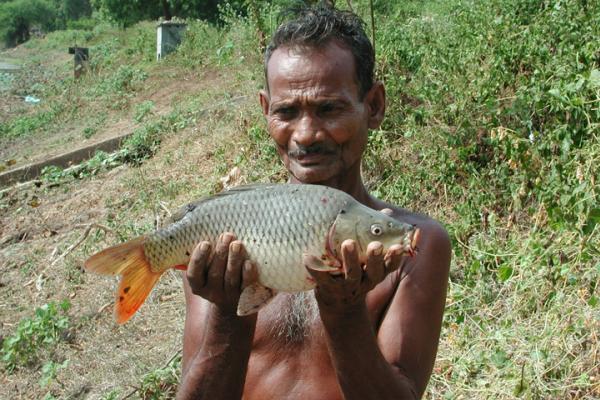Overview
This project aims to introduce a robust, science based, inclusive management regime for Culture Based Fishery of giant freshwater prawn (GFP) and finfish species in Sri Lankan reservoirs.
Projected outcomes will be: improved facets of the supply chain that will ensure long term sustainability and equity; improved productivity, profitability and incomes of male and female fishers; and positive impacts on overall rural wellbeing.
This project has been developed in response to the recommendation of the 2016 ACIAR Scoping Study ‘Re-engagement in agricultural research for development partnerships in Sri Lanka’, to start the program with a Small Research Activity (SRA) to design a multidisciplinary project in aquaculture for freshwater shrimp, including a socio-economic component, focused on communities in the Northern Province. The SRA (commenced in October 2017) is now operating successfully and has provided the impetus and information to generate this proposal to establish the large multidisciplinary project.
The reservoirs of Sri Lanka are numerous, providing a significant storage of rain water, primarily for irrigation and drinking. Although they supported populations of native fish, including freshwater prawns, the advent of culture based fishery practices has enhanced fish production significantly, thus maximising the value of the water resources. Fish production from the reservoirs is predominantly consumed by the local communities, providing a significant proportion of protein requirements. In contrast, freshwater prawns harvested from the reservoirs, are marketed to Colombo and for export. The project will provide mechanisms to increase fish and prawn production, thus contributing to health of the community.
Expected project outcomes
- Investigating stocking, monitoring and harvesting practices that maximise fish and GFP production and product quality.
- Analysing the market chain to determine supply and post-harvest practices that meet market requirements and deliver maximum benefit for male and female fishers.
- Generating bio-economic models as inputs to effective fisheries management.
- Determining opportunities and constraints to achieving gender-equitable livelihood benefits from culture based fisheries.





